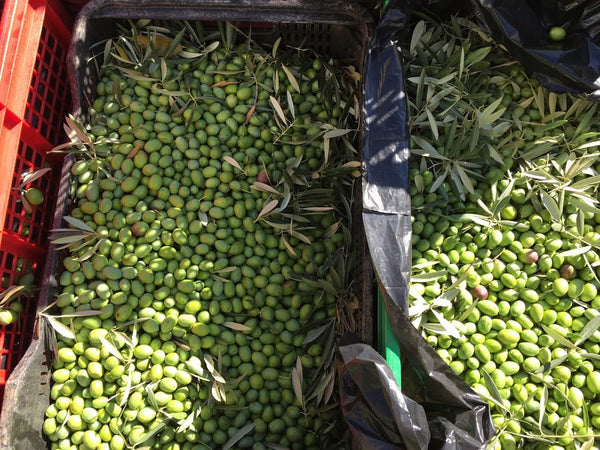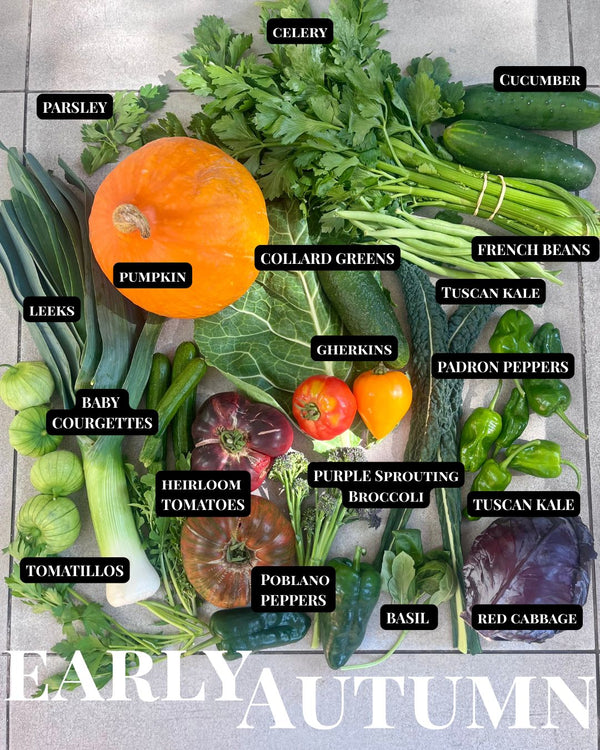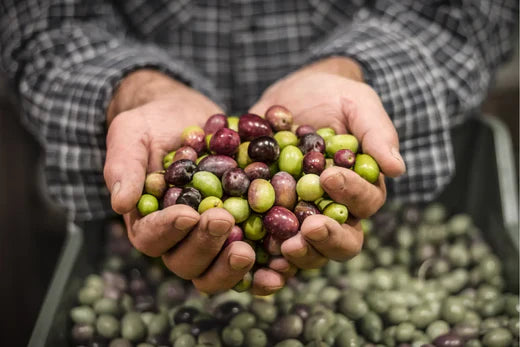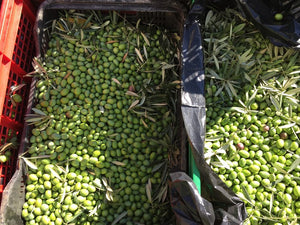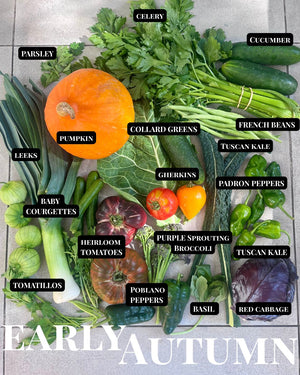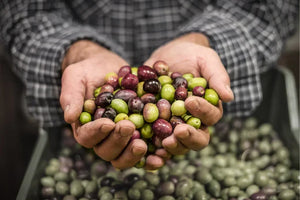Everything you need to know about an olive oil harvest

All the language you need to talk about olive oil like a PRO
With the 2025 olive oil harvest in full swing this is your simple guide to harvest terms, how timing & methods shape flavour, freshness and quality and exactly what you can expect from an early harvest olive oil.
Quick (and possibly most important) tip: Fresher is better. Look for a recent Harvest Year, store your oil cool and dark, and use it within 12–18 months of harvest for peak flavour.
Picked at the start of the season
Olives for early harvest EVOOs are collected slightly under-ripe while still green or just turning purple. For Spanish producers this means late September or Early October. These early harvest olives produce oils with vivid aromas, grassy flavours, and a peppery finish. These oils also have much higher polyphenol levels.
As the yield from early harvest olives is much lower than later harvest olives the price is and should be higher. It takes up to 11 kilos to make 1 litre of early harvest EVOO whereas 4 kilos will produce a litre later on in the season.

Early harvest olive oils are great for: drizzling, finishing, tasting, gifting; anyone who loves bold, fresh oils and/or those looking to maximise their polyphenol intake.
Balanced and versatile
Partly ripe fruit delivers a round, fruity profile with gentler bitterness and good nutritional value. A great choice for all-round cooking and drizzling.
We have a great selection of slightly later harvest EVOOs which are more economical if you are looking for something for everyday use. Several also come in bigger formats which pushes down the price per litre even more making them great for families or anyone who uses a lot of olive oil but who wants to be sure it's good quality and extra virgin.
Less flavour, lower polyphenols
Fully ripe olives (dark purple/black) produce milder, softer oils with higher yield and fewer antioxidants.
Temperature matters
Oil is extracted below 27°C (80°F) to protect delicate aromas and nutrients. Modern mills use centrifuges; “cold extracted” is the precise term.

Traditional wording
This term dates back to the days when olive oil was made with a stone-press days, it meant the oil from the first press. Read more about this here. Today oil is extracted once; the phrase persists, but Extra Virgin is the true quality guarantee.
The highest grade
Pure, mechanically extracted olive juice that meets strict standards, including ≤ 0.8% free acidity, and passes chemical and sensory tests. Read more about this here.

Traceability & character
Single estate oils come from one farm/mill, while monovarietal oils use a single variety (e.g., Picual, Arbequina, Hojiblanca) to highlight distinct profiles.
Crafted for balance
Made from multiple varieties and sometimes groves to achieve a consistent, harmonious flavour year to year. Ours are always single estate.
Freshness signal
Indicates when olives were picked (e.g., “Harvest 2025/26”). Because olive oil is essentially fruit juice, the most recent harvest tastes the brightest and has the highest polyphenol count.
Clarity vs. cloud
Filtered oils are gently clarified for stability and clarity. Unfiltered oils are meant to be enjoyed very quickly before the unfiltered sediment oxidises and contaminates the oil.
Nature’s antioxidants
Compounds that protect oil from oxidation and deliver that pleasant peppery “tickle.” Early harvest oils carry more. Learn more about the incredible benefits offered by polyphenols here.
A quality indicator
Measures free oleic acid (not sourness). Extra virgin must be ≤ 0.8%. Most of our oils have levels a lot lower than this. Lower values point to healthy fruit and careful processing.
At a glance – all the olive oil harvest lingo you need to talk harvests with the pros
Learn the essential olive oil harvest terms used by growers, sommeliers, and producers — from early harvest to polyphenols — so you can taste and talk olive oil like a pro.| Term | What it describes | Typical flavour | Notes |
|---|---|---|---|
| Early Harvest | Picking time (early season) | Bold, grassy, peppery | Higher polyphenols; lower yield |
| Mid Harvest | Picking time (mid-season) | Balanced, fruity | Moderate bitterness and sweetness |
| Late Harvest | Picking time (fully ripe) | Mild, soft | Higher yield; fewer antioxidants |
| Cold Pressed / Cold Extracted | Extraction temperature | Fresh, clean | Under 27 °C to preserve aroma |
| First Press | Traditional pressing method | Pure, full-bodied | Historic term; now replaced by modern extraction |
| Extra Virgin Olive Oil (EVOO) | Quality grade | Pure, complex | ≤ 0.8% acidity and passes sensory test |
| Filtered | Oil clarity - particles and dust left in the oil will oxidise and start to ferment damaging the quaility | Makes no difference | Longer shelf life, clear appearance |
| Unfiltered | Oil clarity | Robust | Cloudy this oil is meant to be enjoyed fresh and lasts no more than 6 weeks |
| Single Estate | Source | Characterful | From one farm, ensures traceable origin |
| Monovarietal | Olive variety | Distinctive | Made from a single olive variety (e.g., Picual, Arbequina) |
| Blend/coupage | Combination of varieties | Balanced, consistent | Carefully crafted to achieve harmony of flavour |
| Polyphenols | Antioxidant content | Peppery, lively | Higher in early harvest oils; linked to health benefits |
| Acidity | Quality indicator | Neutral | ≤ 0.8% for extra virgin; lower means fresher fruit |
| Harvest Date / Year | Date of picking | — | The fresher the oil, the brighter the flavour |


